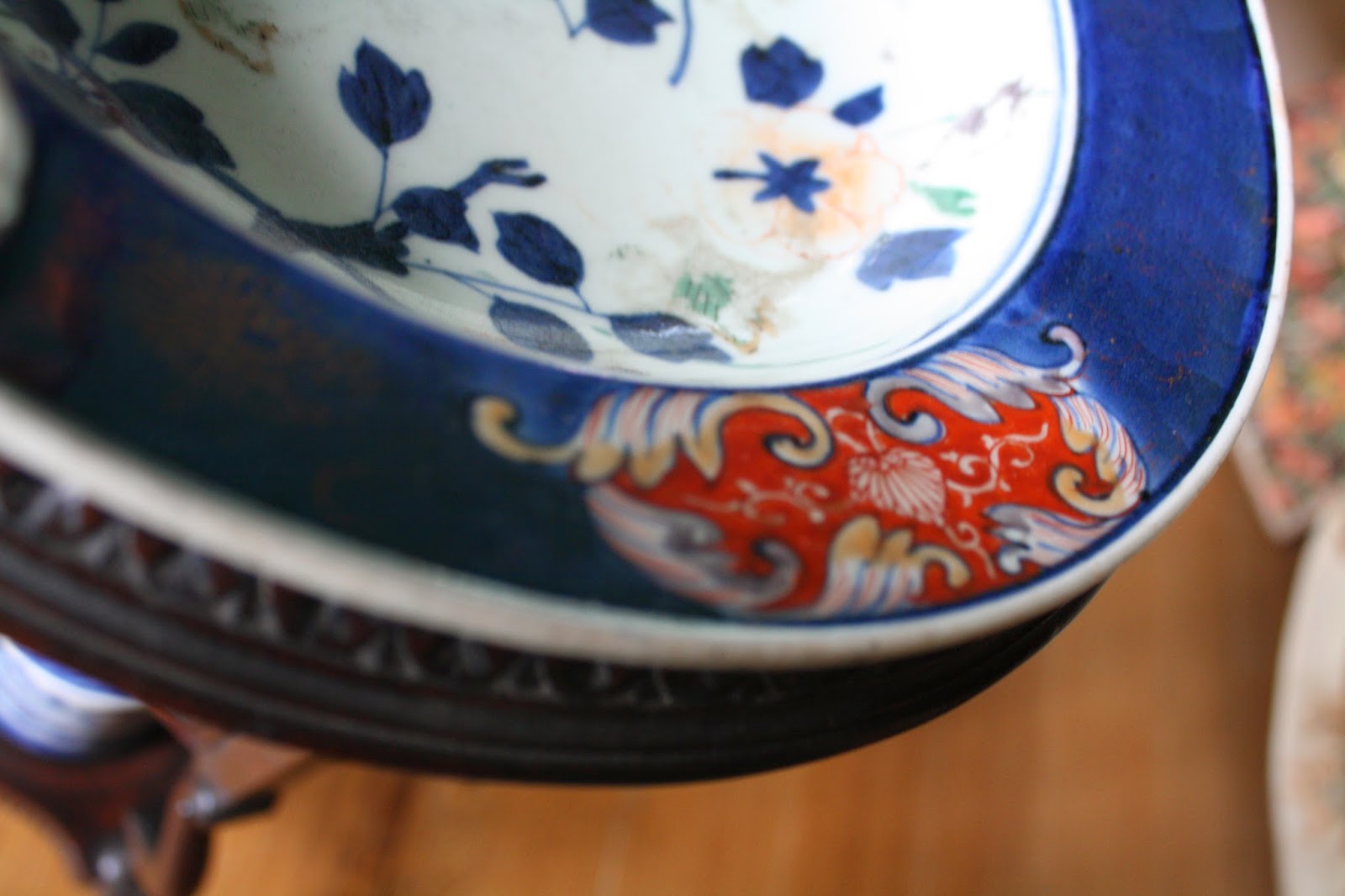Object: Warming Pan, ca. 1770-1800
Accession#: 1900.0061
Winter presented a difficult time for families simply trying to keep warm, including the Randolphs. As one historian states, “for most
American colonists, winter could be anything from inconvenient to challenging
to deadly.” The
fireplace provided the only source of heat until Benjamin Franklin invented the
wood stove. A fireplace gives but takes away, as much of its heat goes up
the chimney and pulls cold air back in to replace it. So heating a room could
be a somewhat unsuccessful venture. The following quote, from the Farmer’s
Almanac (1784), gives advice on how to keep warm during winter:
RECIPE TO KEEP ONE’S SELF WARM A WHOLE WINTER WITH
ONE PIECE OF WOOD.
Take a piece of wood, fling it out the window into the Yard; then
run downstairs as hard as you ever can; when you have got it, run up again with
the same measure of speed; keep throwing and fetching up until the Exercise
shall sufficiently heated you. Renew as often as the occasion shall require!
However, during the night when one might not be energetic
enough for such an exercise and is ready for some rest, a warming pan might be
filled with hot coals. It would then be used to warm the beds before being
occupied.
Usually made of copper, warming pans were circular with a
hinged cover that was perforated and etched with landscape designs or flowers.
It would also be fixed with a handle made of oak. Better quality ones had
handles made of mahogany that were “richly carved with elaborate designs.” An
example of a warming pan similar to what might have been used by the Randolph
family is this one in Wilton’s collection. It is made of brass, copper, and wood and
has a long handle which ends at a round pan with hinged lid.
 Originating
in England in 1740, warming pans were preceded by stone water jugs that would
be filled with hot water. Similarly there was a foot warmer which was a
pierced tin box in a wooden frame that was filled with coals and placed in
coaches or in rooms. They might also have been used in church and set
in the bottom of the box pew to keep worshipers warm. Warming pans were
hung by the fire place for ease of use in one’s bedroom and as one historian
attests, “Their burnished faces added glory to the stern faces of
Colonial interiors.” They were inserted constantly and repeatedly into the bed
as to not scorch the sheets, which might have been linen at that time. The
Randolph family had as many as 5 bedrooms that each might have taken part in
this luxury which would have been a treat for whoever was the first to hop into
bed.
Originating
in England in 1740, warming pans were preceded by stone water jugs that would
be filled with hot water. Similarly there was a foot warmer which was a
pierced tin box in a wooden frame that was filled with coals and placed in
coaches or in rooms. They might also have been used in church and set
in the bottom of the box pew to keep worshipers warm. Warming pans were
hung by the fire place for ease of use in one’s bedroom and as one historian
attests, “Their burnished faces added glory to the stern faces of
Colonial interiors.” They were inserted constantly and repeatedly into the bed
as to not scorch the sheets, which might have been linen at that time. The
Randolph family had as many as 5 bedrooms that each might have taken part in
this luxury which would have been a treat for whoever was the first to hop into
bed.
Works Cited
Jennings,
George Wilson. House and Garden, Volume
34. “Keeping Warm in Colonial Winter:
How they used Warming pans
and Foot Warmers”. Google Books. 21 November 2014. <http://books.google.com/books?id=ywrnAAAAMAAJ&pg=RA5-PA45&lpg=RA5-PA45&dq=colonial+bed+warmer&source=bl&ots=EtkXsSDGuR&sig=sN5qLReXZ0kUuLHNtsRW41HgXDI&hl=en&sa=X&ei=6K8ZVImHEoe4ogSbtYAg&ved=0CEUQ6AEwADgK#v=onepage&q=colonial%20bed%20warmer&f=false>
Robinson,
David. “Coping with the Cold”. Colonial Williamsburg. 21 November 2014.
<http://www.history.org/Foundation/journal/Winter09/cold.cfm>
“How
Hampton Citizens Lived in Colonial Times: Part 4: Colonial Fireplace: Source of
Heat and
Light”. Lane Memorial Library. 21 November 2014. <http://www.hampton.lib.nh.us/hampton/history/17761976/1976_4.htm>
“Keeping
Warm in the Winter”. The Senate House. 21 November 2014.
<http://www.senatehousekingston.org/colonial-era/keeping-warm-in-the-winter/>




























